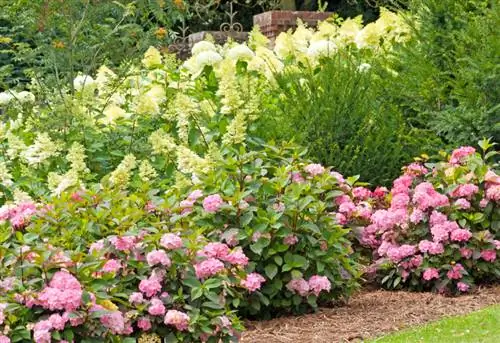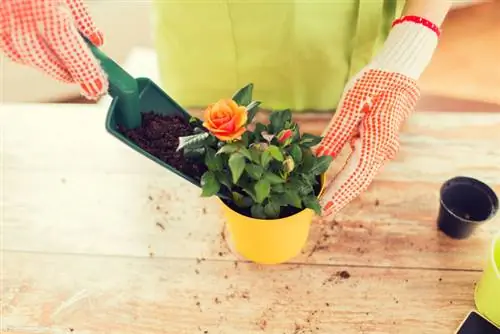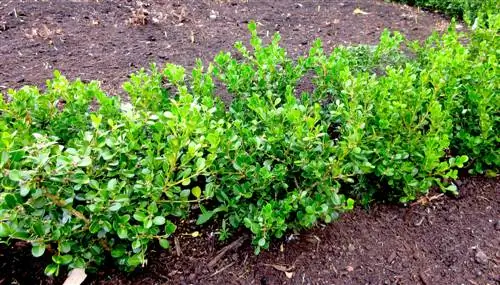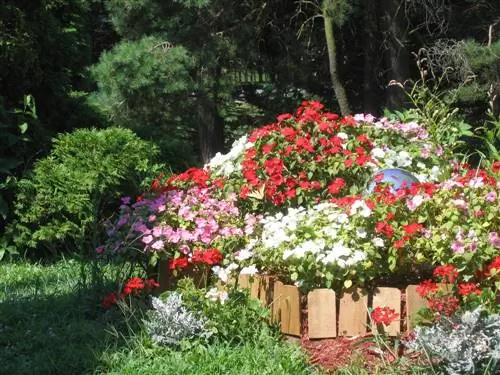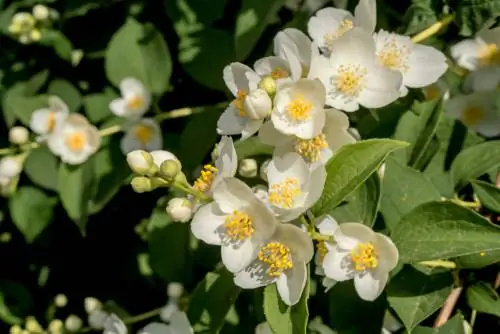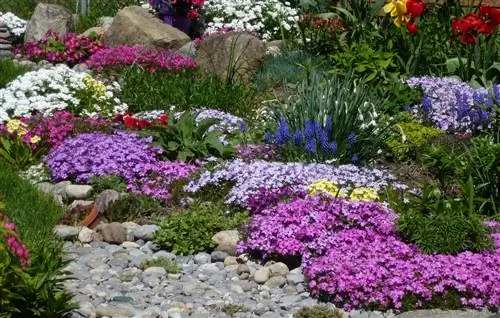- Author admin [email protected].
- Public 2023-12-16 16:46.
- Last modified 2025-06-01 06:02.
Hortensias are not only suitable as magnificent individual perennials with which you can turn bare spots under sparse trees into an attractive garden highlight. As a bedding plant, the robust hydrangea impresses with its long flowering period and the romantic charm of its magnificent umbels. In this article we explain how to create a hydrangea bed.
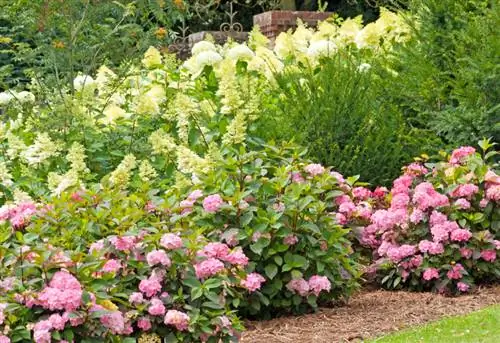
How do you create a hydrangea bed?
To create a hydrangea bed, choose a partially shaded location and prepare the soil with permeable, nutrient-rich and slightly acidic soil. Make sure there is sufficient planting distance (50 cm for farmer's hydrangeas, 1 m for panicle hydrangeas) and avoid waterlogging. Combine hydrangeas with other shade plants for an attractive bed.
Planning and preparation
The optimal planting time for hydrangea is autumn. Alternatively, you can design the hydrangea bed in spring. Since the freshly planted hydrangeas are still somewhat sensitive and could be damaged by late frosts, it is recommended to wait for the ice saints.
Location
Hydrangeas prefer semi-shady or shady locations. Since it is difficult to shade several plants in a bed in summer heat, we advise against a location in full sun for the hydrangea bed.
Planting spacing
Since hydrangeas can reach an impressive size and are reluctant to be moved, you should create the bed in a place where the hydrangea can spread. The older the plants get, the more beautiful and magnificent the hydrangea usually blooms. The following distances should not be less than:
- Farmer hydrangeas: Fifty centimeters
- Pranicle hydrangeas: One meter
Soil texture
Hydrangeas prefer slightly acidic, permeable and nutrient-rich soil. These garden beauties, on the other hand, do not like calcareous soils. In addition, the substrate should be able to store water well, as the hydrangea is very thirsty, and not only in the hot summer months.
The topsoil often does not meet these requirements. In this case, replace the soil with special hydrangea soil. Alternatively, you can also use ericaceous soil, rhododendron or azalea soil.
Avoid waterlogging
Sometimes the deeper layers of the earth are compacted so that water can no longer drain away easily. This creates waterlogging, to which the hydrangea reacts very sensitively. In this case, add a drainage layer of coarse sand or gravel to the bed and then fill it with soil.
Inexpensive alternative to buying - self-propagation
If you need a lot of perennials for the hydrangea bed, this can be quite expensive. Hydrangeas can be easily propagated by cuttings. With this method you can not only grow the plants yourself for a uniform bed planting, but also combine many different flower colors with each other. The different flowering times and tones make such a planting look extremely interesting.
Tip
A hydrangea bed where you combine the hydrangea with other shade plants is extremely attractive. For example, lilies of the valley, hostas or ferns are well suited.

